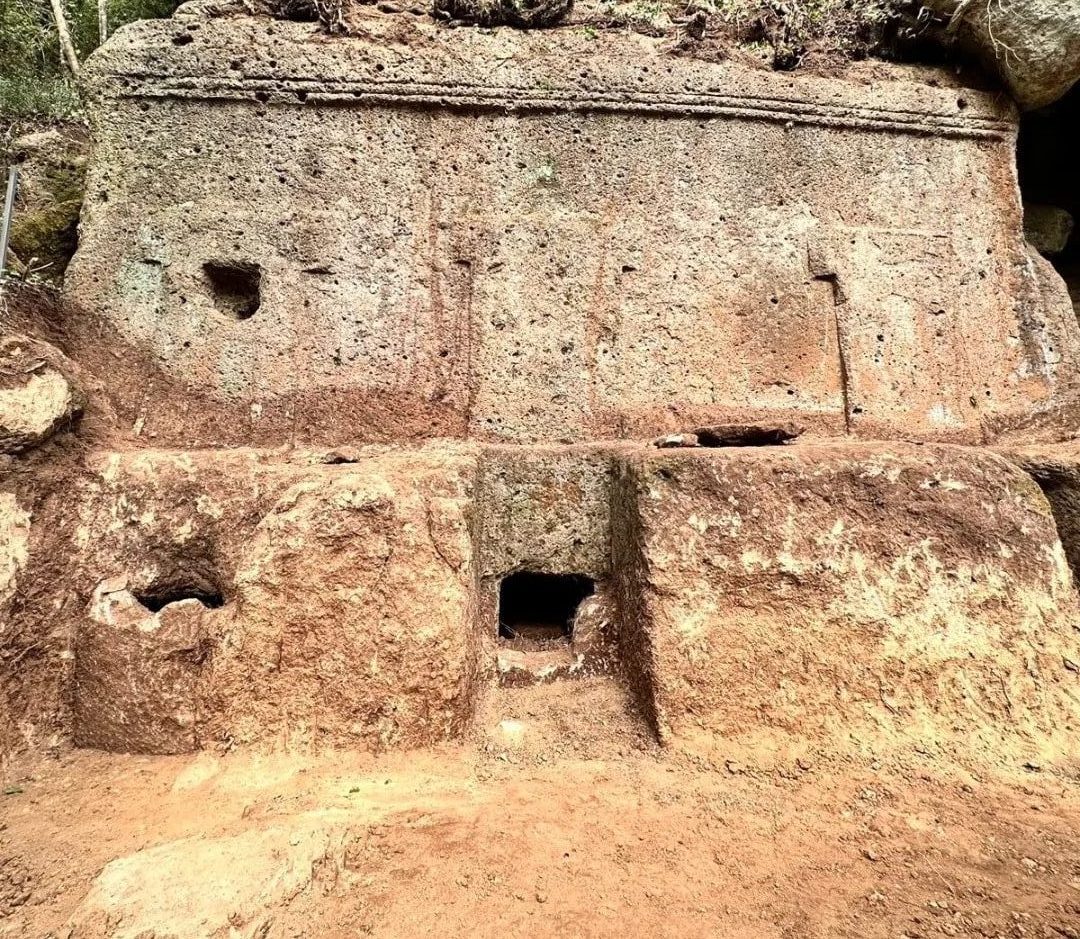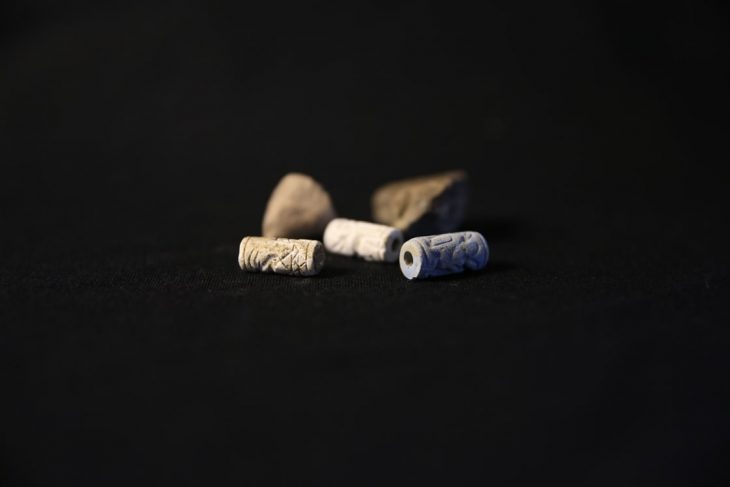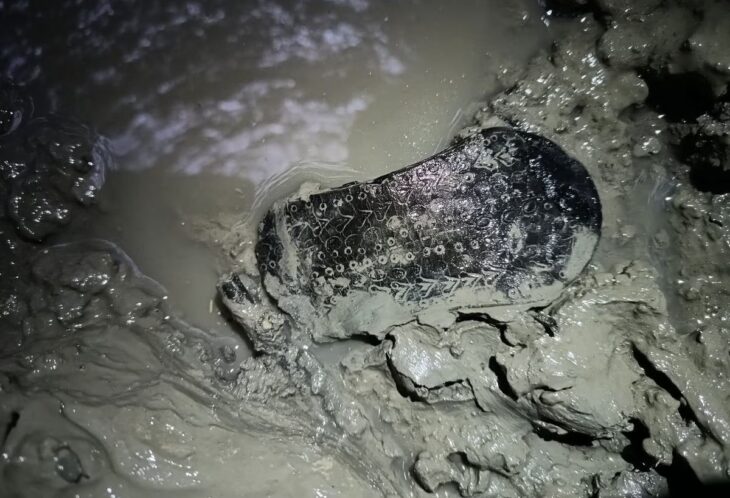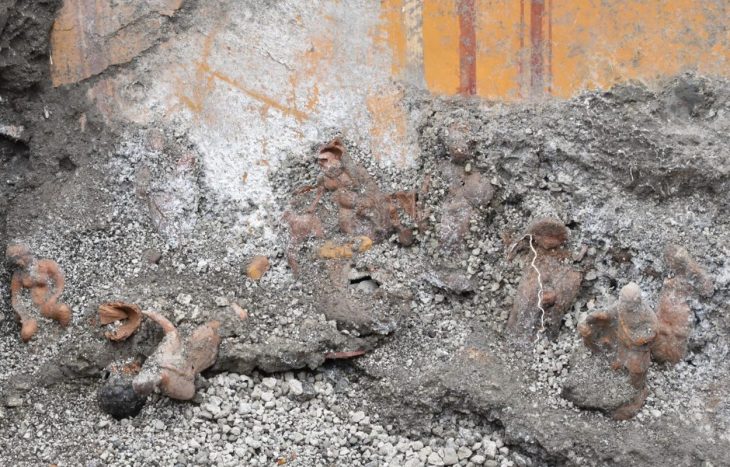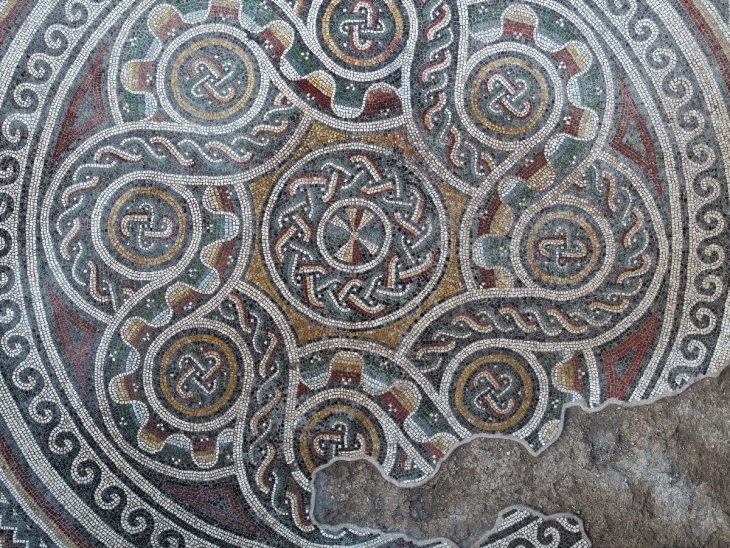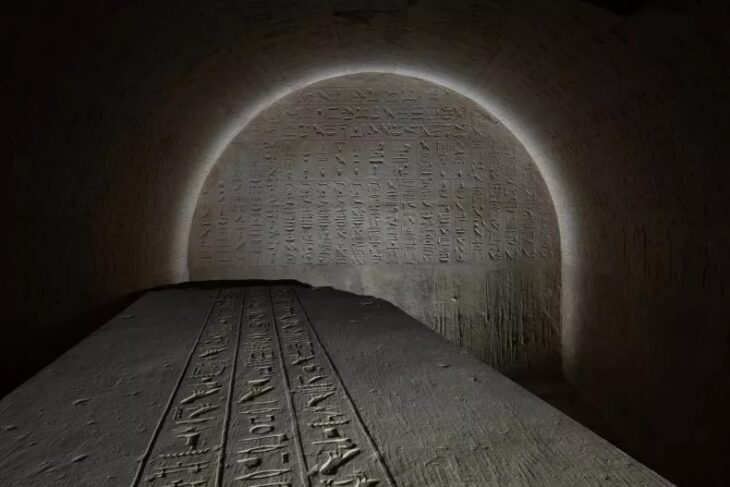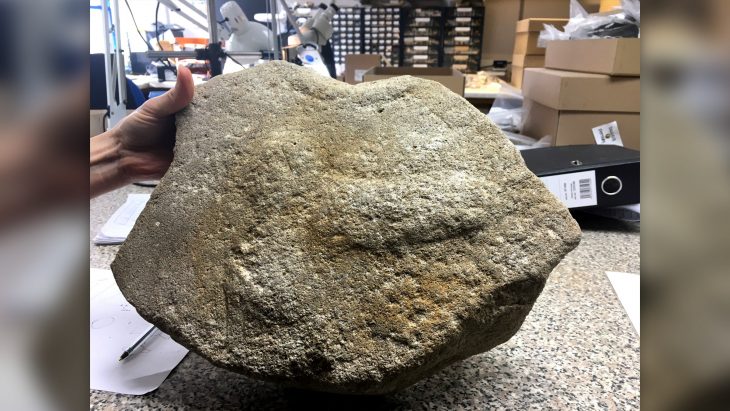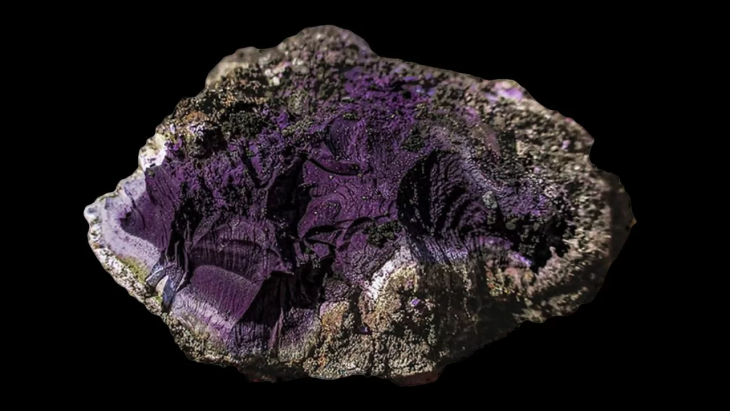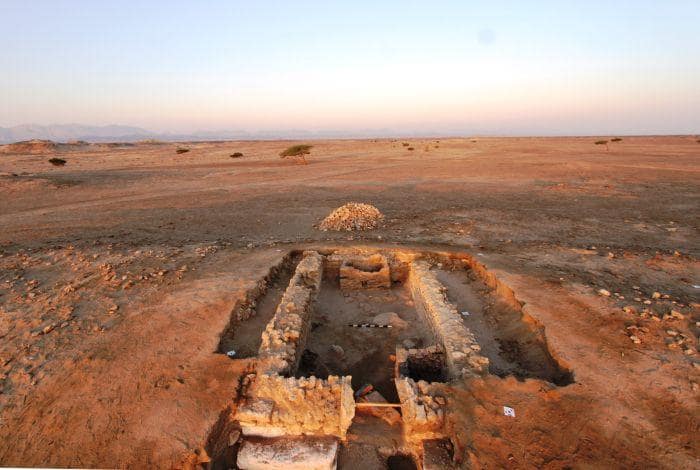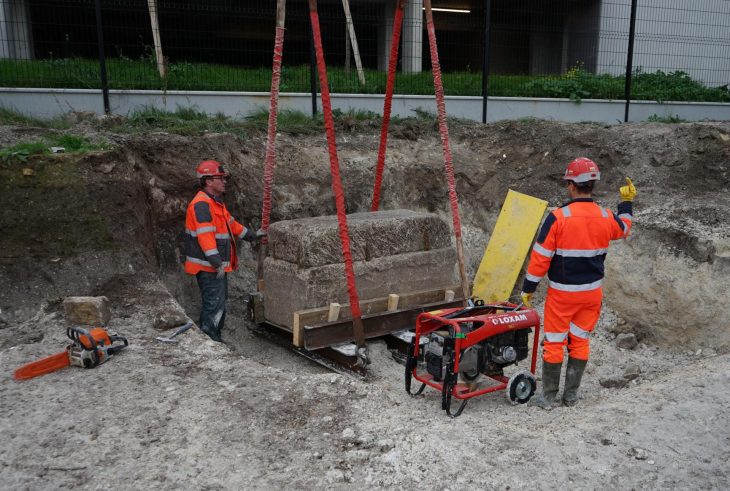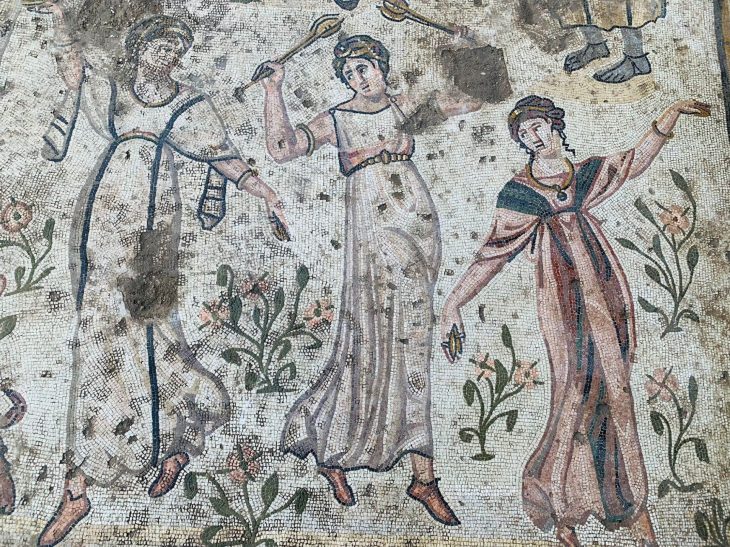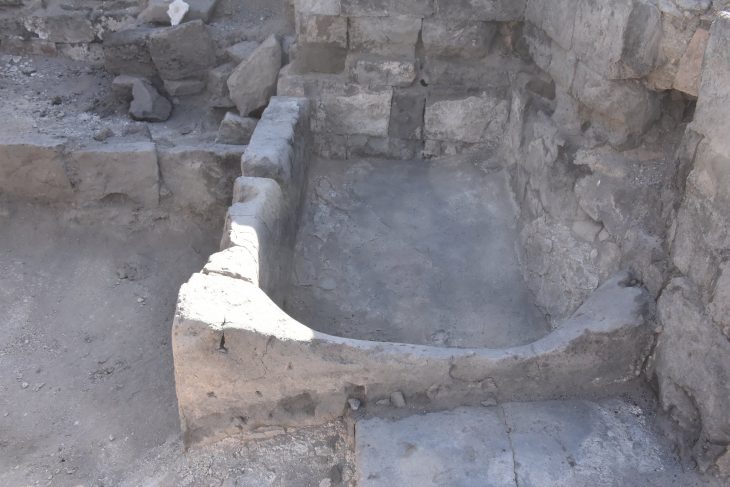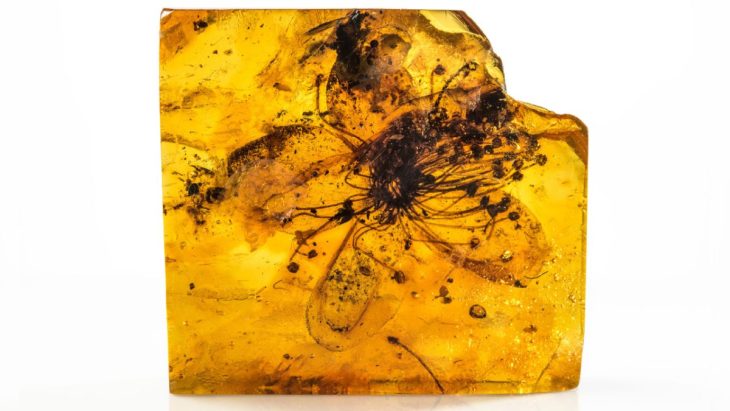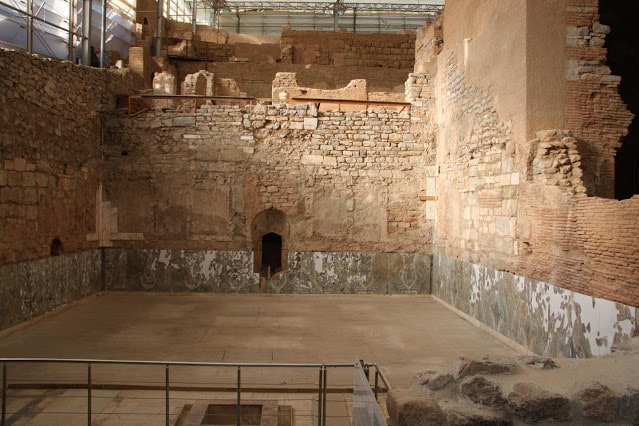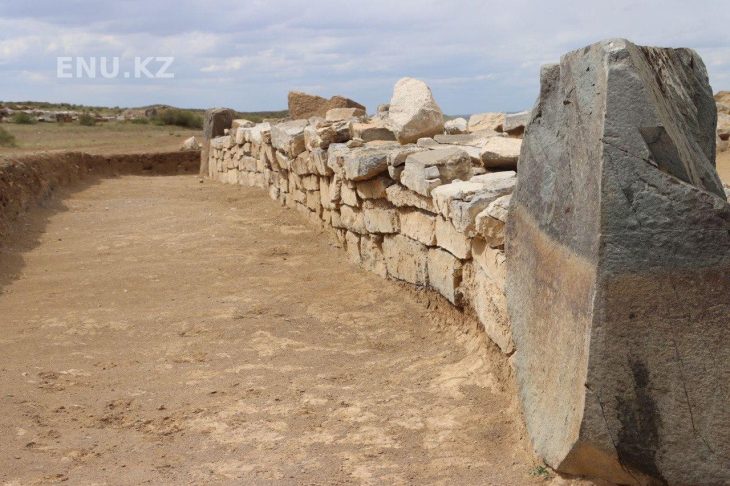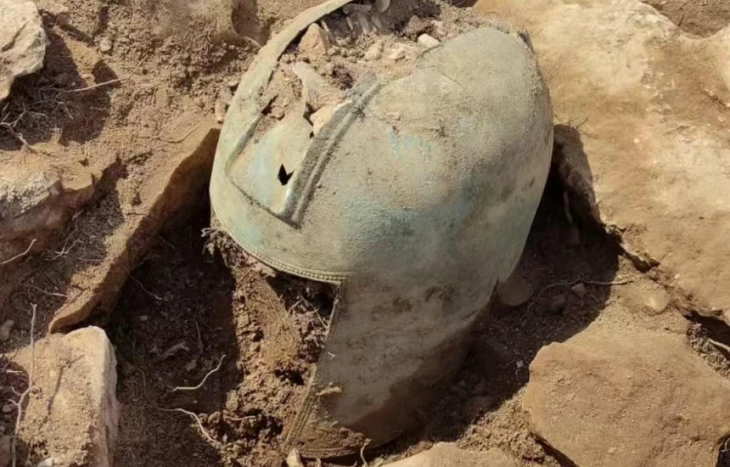After years of work, archaeologists discovered an impressive Etruscan tomb partially hidden underground in the rock-cut necropolis of San Giuliano in Barbarano, north of Rome.
The Etruscan Necropolis of San Giuliano is carved into the reddish rocks of the Marturanum Park, a protected natural area in the municipality of Barbarano Romano, on the road between Rome and Viterbo, in the heart of Southern Etruria.
According to archaeologists, no known Etruscan necropolis presents such a variety and richness of burial types as San Giuliano. Dating back to the 7th century BC, it stands on the sides of a tufaceous cliff occupied by a stable settlement already during the Bronze Age.
The discovery was made while researchers were cleaning and consolidating some of the site’s most representative rock-cut funerary chambers, which date from the seventh to third centuries BCE.
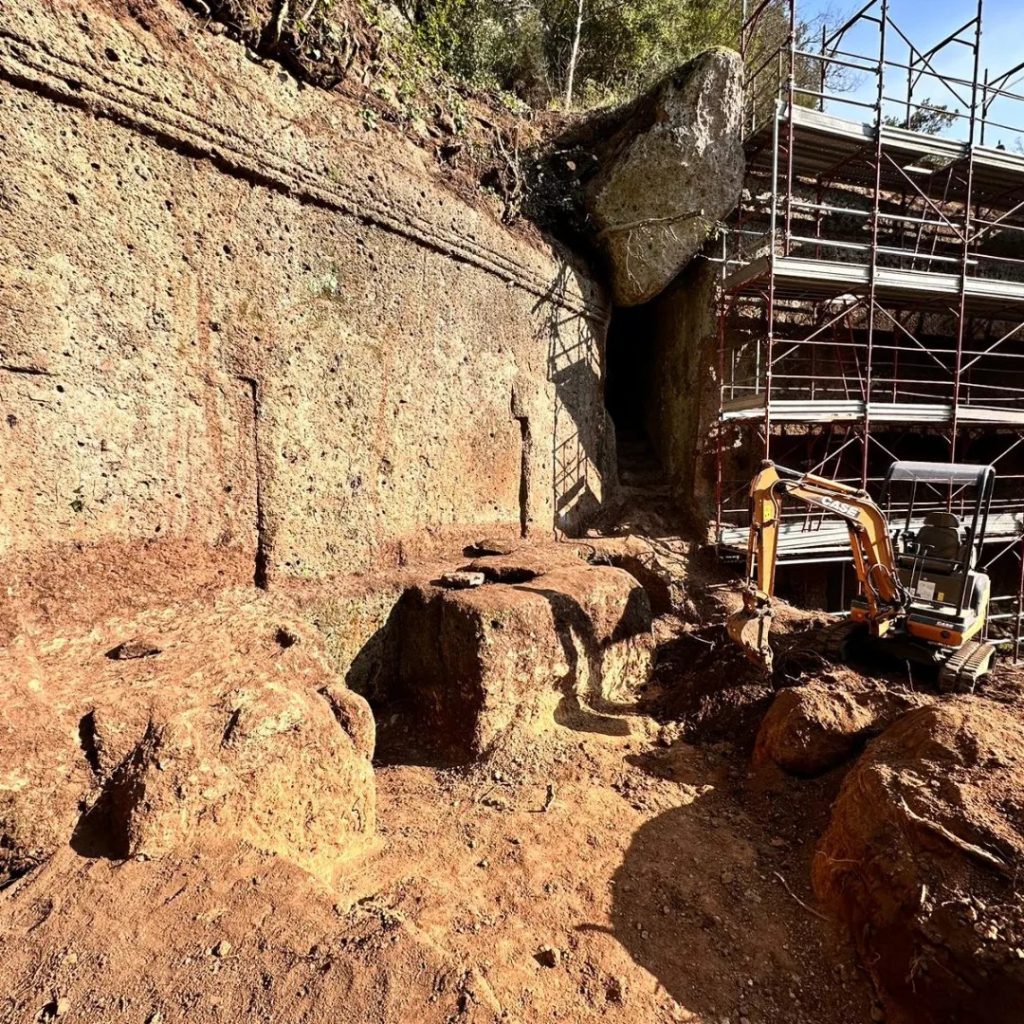
The “Tomb of the Queen” (Tomba della Regina), one of the most important tombs in the necropolis, was chosen for consolidation and restoration work this season. It is a grandiose three-sided semi-dado carved into the rock, 14m wide and 10m high, dating from the 5th century BC. Its name probably derives from the majesty of its size.
This type of tomb is common along the rocky wall facing the plateau of San Giuliano, where the ancient settlement stood, and it represents the expression of new changes in Etruscan society: new social classes emerge and fill the gap that once existed between aristocrats and the humble population.
During a clearance operation around the Queen’s Tomb, archaeologists noticed what appeared to be a second semi-buried monumental tomb. After carefully removing the dense vegetation, the structure emerged in all its grandeur.
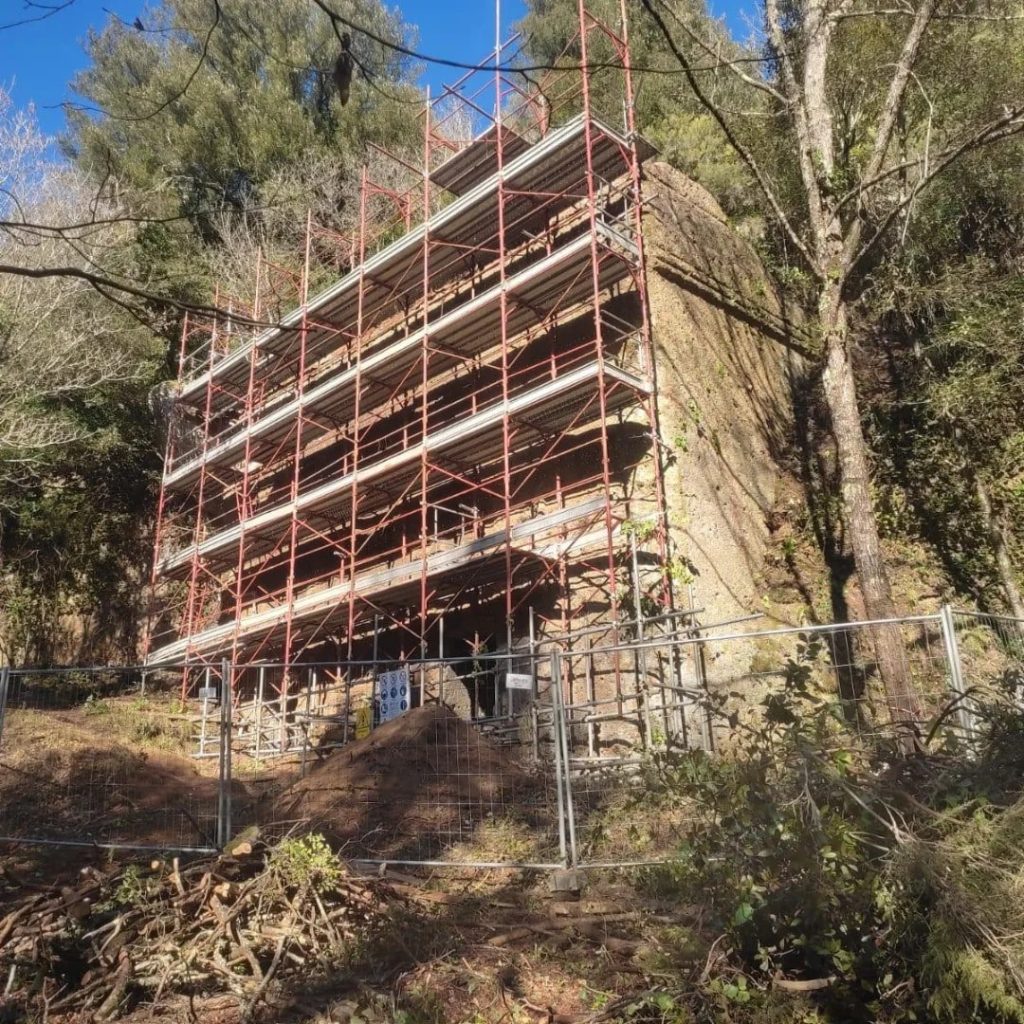
Excavations carried out to clear the façade in fact uncovered a further three-chambered tomb surmounted by three semi-flint doors, subsequent to the Queen’s tomb, perfectly preserved in its architectural part. Experts believe it was built in the fifth or fourth century BCE, shortly after the nearby Queen’s Tomb.
The tomb also highlights the technical mastery of Etruscan culture in excavating monumental funerary structures within cliffs and rocky slopes.
Conservation and adaptation work on the newly discovered tombs is expected to be completed in the coming months.
Soprintendenza Archeologia Belle Arti Paesaggio Etruria Meridionale
Cover Photo: Soprintendenza Archeologia Belle Arti Paesaggio Etruria Meridionale

